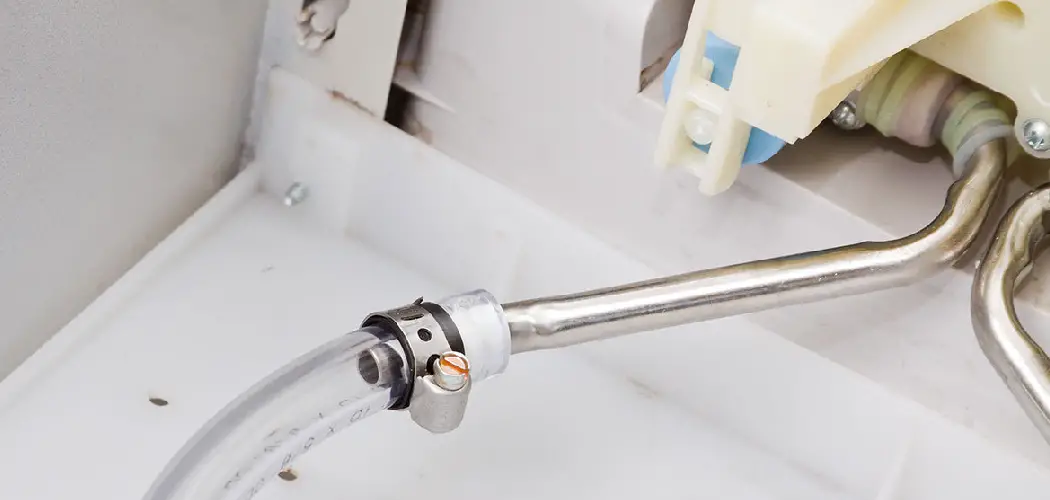Are you tired of dealing with a faulty refrigerator? Are you trying to find a solution on how to disconnect the water line from the back of your refrigerator? If so, then this blog post is perfect for you! In it, we’ll cover everything needed in order to successfully and efficiently disconnect your fridge’s supply line.
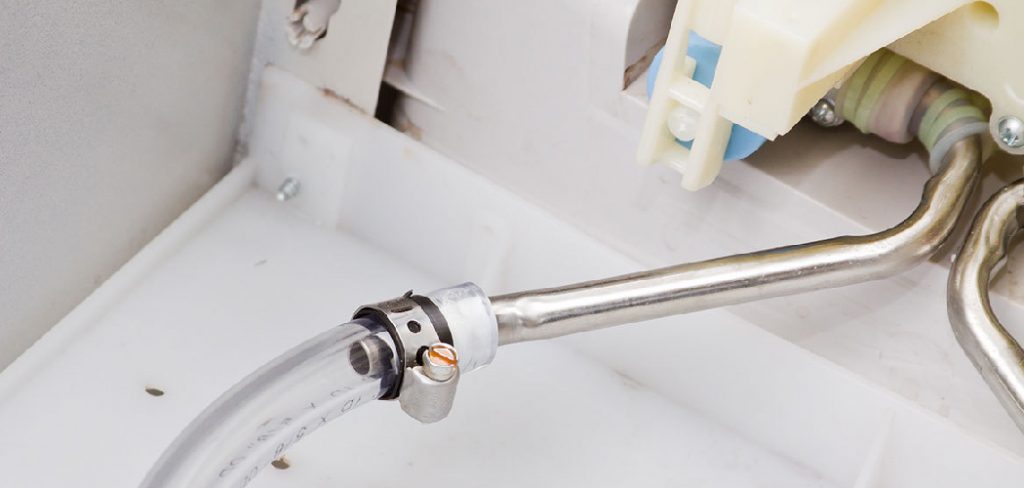
We’ll discuss what materials are necessary, provide foolproof steps on exactly how you should go about the process, as well as offer helpful tips and tricks on how to disconnect water line from back of refrigerator that will help make it more efficient. With our help, you’ll be able to get rid of any old appliances that no longer work while also having peace of mind knowing that the job went off without a hitch.
Why May You Want to Disconnect the Water Line From the Back of the Refrigerator?
1 . To Move Your Refrigerator
If you are planning to move your refrigerator for any reason, it is important to disconnect the water line before doing so. This will not only protect the water line from damage but also prevent any potential leaks while moving.
2 . For Maintenance or Repair Purposes
Disconnecting the water line from the back of your refrigerator may be necessary if you need to perform any maintenance or repair tasks. This will allow you to have better access to the back of your refrigerator without the water line getting in the way.
3 . To Replace the Water Line
If your current water line is damaged or needs replacement, disconnecting it from the back of your refrigerator is necessary. This will allow you to remove the old water line and install a new one without any obstructions.
4 . To Shut Off the Water Supply
In case of a leak or other water-related issue with your refrigerator, disconnecting the water line from the back is crucial. This will shut off the water supply to your fridge, preventing any further damage or potential hazards.
How to Disconnect Water Line From Back of Refrigerator in 5 Easy Steps
Step 1: Gather All The Tools
The very first step is to gather all the necessary tools that you will need to disconnect the water line from the back of your refrigerator. Here is a list of some basic tools that you should have:
- A pair of pliers
- Adjustable wrench
- Bucket or bowl
- Towels or rags
Step 2: Locate The Water Valve
Your fridge’s water supply valve is usually located at the back, near to the bottom of the appliance. Look for a small, cylindrical valve with a lever or knob attached to it. Turn off this valve by moving the lever or knob in a clockwise direction.
Step 3: Disconnect The Water Line
Once you have turned off the water supply valve, use your pliers to unscrew the nut that holds the water line to the valve. You may use a towel or rag to catch any residual water that may leak out of the line.
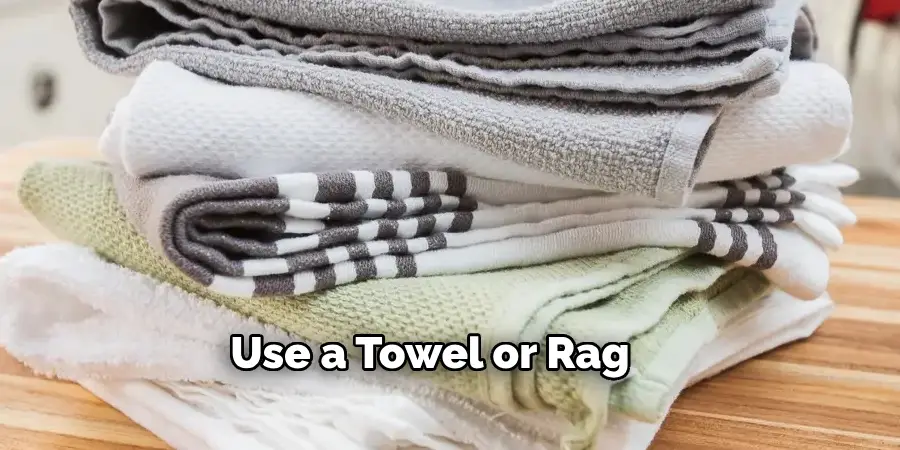
Step 4: Disconnect The Line From Fridge
Now, you will need to disconnect the other end of the water line attached to your refrigerator. Use an adjustable wrench to unscrew this nut in a counterclockwise direction. Again, use a towel or rag to catch any water that may come out.
Step 5: Clean and Reconnect
Before you reconnect the water line, make sure to clean both ends of the line thoroughly. This will remove any accumulated debris that may have blocked the flow of water. Once cleaned, reattach the line to your fridge and supply valve using the pliers and wrench. Make sure both nuts are tightened securely.
Some Extra Tips to Disconnect Water Line From Back of Refrigerator
1 . Do Not Rush into Things
Disconnecting the water line from the back of your refrigerator may seem like a simple task, but it is important to take your time and do it carefully. Rushing through the process can lead to damaging the water line or causing leaks, which will only create more problems for you in the long run.
2 . Turn off the Water Supply
Before attempting to disconnect the water line, make sure to turn off the main water supply. This will ensure that no water is flowing through the line and make it easier for you to disconnect without any unwanted spills.
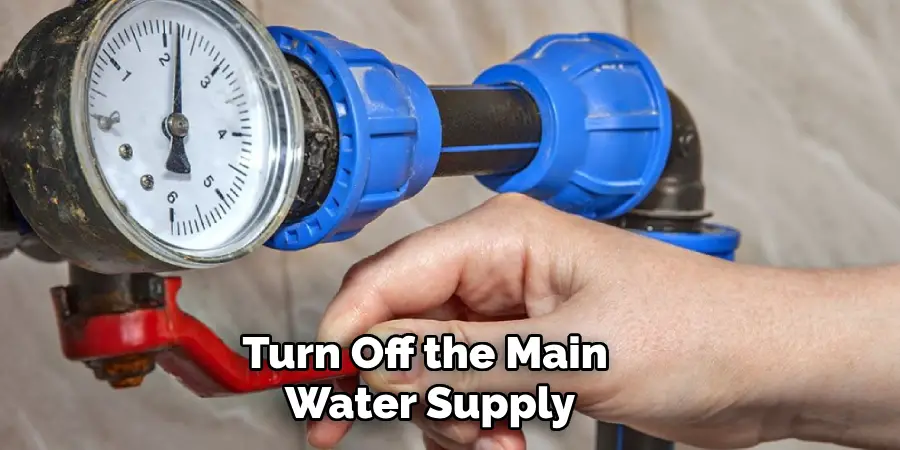
3 . Have a Towel or Bucket Handy
Even with the main water supply turned off, there may still be some residual water left in the line. To avoid any mess, keep a towel or bucket handy to catch any water that may come out when disconnecting the line.
4 . Use Proper Tools
Using the correct tools is crucial when it comes to disconnecting a water line from the back of your refrigerator. Make sure to have an adjustable wrench or pliers on hand to loosen and remove any fittings or connectors.
5 . Label the Water Line
When disconnecting multiple water lines, it can be easy to get them mixed up. To avoid any confusion when reconnecting, label each line with a small piece of tape or marker so you know which one goes where.
6 . Follow Instructions Carefully
Different refrigerator models may have different steps for disconnecting the water line, so it is important to read the manufacturer’s instructions before attempting to disconnect. Following these instructions carefully will ensure that you do not damage any parts or cause any leaks.
7 . Consider Hiring a Professional
If you are unsure about how to disconnect the water line from your refrigerator, it may be best to hire a professional for assistance. This will ensure that the job is done correctly and prevent any potential damage to your appliance.
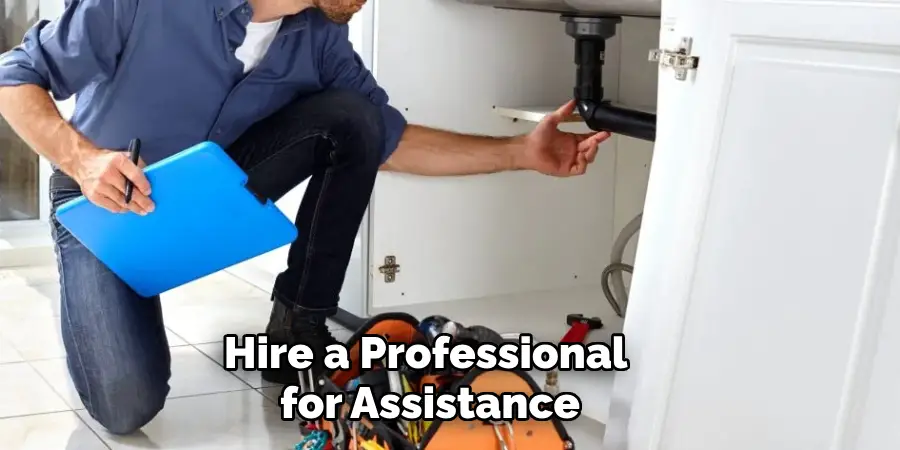
Frequently Asked Questions
What Precautions Should I Take Before Disconnecting My Refrigerator’s Water Line?
Before attempting to disconnect your refrigerator’s water line, make sure to unplug the fridge and shut off its water supply. If you are unsure how to turn off the water supply, consult your fridge’s manual or contact a professional plumber for assistance. Also, have a towel or bucket ready to catch any water that may spill out during the disconnection process.
Can I Disconnect My Refrigerator’s Water Line Without Shutting Off The Water Supply?
It is not recommended to disconnect your refrigerator’s water line without first shutting off the water supply. This can result in excessive water leakage and potential damage to your fridge or surrounding area. It is always best to take precautionary measures and shut off the water supply before disconnecting any water line.
How Do I Disconnect My Refrigerator’s Water Line From The Back?
To disconnect your refrigerator’s water line from the back, locate the end of the line where it connects to the fridge. Depending on your model, this may be a push-in fitting or a threaded nut. If it is a push-in fitting, simply depress the collar or ring around the end of the line and pull it out. If it is a threaded nut, use an adjustable wrench to carefully loosen and remove it from the fridge.
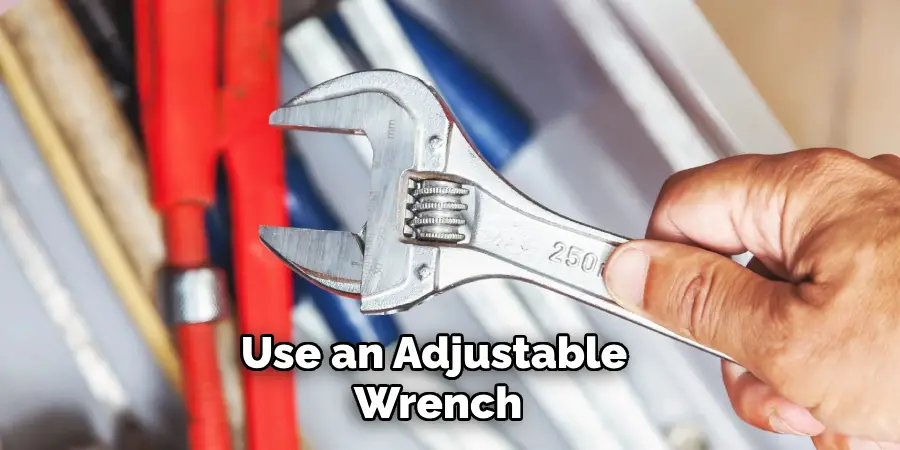
What Should I Do With The Water Line After Disconnecting It?
After disconnecting your refrigerator’s water line, you can either cap off the end of the line or remove it completely. If you plan on reconnecting the water line in the future, it may be beneficial to leave it intact and securely store it behind your fridge. However, if you no longer need the water line, you can safely remove and dispose of it according to local regulations.
Can I Reconnect My Refrigerator’s Water Line?
Yes, you can reconnect your refrigerator’s water line by following the same steps in reverse. Make sure to properly reattach and secure the end of the line to your fridge before turning on the water supply again. Check for any leaks or issues before plugging your fridge back in and resuming normal use. If you encounter any problems, consult a professional for assistance. Overall, it is important to take proper precautions and follow manufacturer’s instructions when disconnecting and reconnecting your refrigerator’s water line. Doing so can prevent potential damage or accidents and ensure the safe use of your fridge.
Can I Do This Myself?
Disconnecting and reconnecting a water line can be a simple task, but it is always best to consult your fridge’s manual or seek professional help if you are unsure. If you have experience with plumbing tasks and feel confident in your abilities, then it may be safe to do this yourself. However, if you are unfamiliar with the process or unsure of your skills, it is always better to err on the side of caution and seek assistance from a professional.
They can provide guidance and ensure the task is done correctly and safely. In the end, prioritizing safety should always be the top priority when handling any household appliance. So, assess your skills and knowledge before attempting to disconnect or reconnect your refrigerator’s water line.
Conclusion
To recap, we have gone through the important steps to successfully disconnect a water supply line from the back of your refrigerator. To ensure this job is done safely and correctly, always use caution when handling plumbing lines, turn off the water supply ahead of time, and disconnect any power sources that may be connected to the refrigerator. If ever in doubt about how to proceed, it would be wise to contact a qualified professional.
Now you know how to disconnect water line from back of refrigerator! Taking the time to properly disconnect the water line now will save you precious time and energy later on down the road. Now go forth with confidence – armed with knowledge and ready for action! So take advantage of what you’ve learned here today and don’t hesitate to reconnect with us if you ever need further help.

